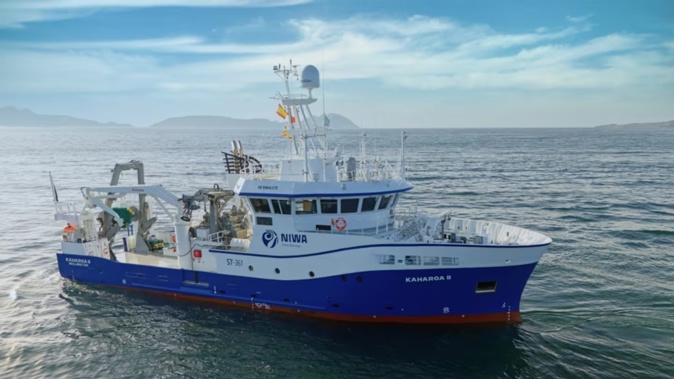
Niwa’s new research vessel, Kaharoa II, will be in the Hauraki Gulf Marine Park over the next three weeks filming underwater habitats.
It will be the maiden science voyage for the National Institute of Water and Atmospheric Research’s vessel, which was officially christened by Minister for Science, Innovation, and Technology Judith Collins last week.
The survey is being done on behalf of Fisheries New Zealand and is supported by the Department of Conservation and Seafood New Zealand.
The science agency said the vessel will focus on seafloor communities across reefs, sand, and mud habitats in what was one of New Zealand’s most valued and intensively used coastal spaces.
Niwa marine ecologist Dr Mark Morrison said the new technology on Kaharoa II would enhance how scientists conducted their work.
“We’ll be collecting baseline information on what habitats are present in the Hauraki Gulf Marine Park using a state-of-the-art camera system to collect underwater imagery.
“We can see what’s happening in real-time, and this has been improved by the new fibre cables onboard Kaharoa II,” Morrison said.
As well as daytime surveys, scientists would work during the night to capture images of fish sleeping on the seafloor and the nocturnal species that used the dark to forage.

The interior of the bridge.
Underwater cameras were equipped with powerful lights, which would appear from the shore as lit-up domes in the water in shallower areas.
The vessel would move from the shallowest parts of the marine park to the deepest edge of the shelf in the park, an area that little was known about, Morrison said.
“Restoration of marine habitats and ecosystems requires knowledge of what is there now; without this information, it is not possible to set proper restoration goals and objectives.
“A Hauraki Gulf Marine Park-wide survey of this intensity, range of habitats, and depth span has not been done before.”

The exterior of the bridge.
Additionally, the voyage would return to some locations previously sampled by Niwa in 2015 with towed cameras, to see if or how the undersea landscape and biodiversity had changed, he said.
Fisheries New Zealand acting director of science and information Dr Rich Ford said the Hauraki Gulf was important to all New Zealanders while its waters and islands were home to a diverse range of species.
“The next-level camera technology onboard Kaharoa II will provide a better view of the species and habitat that live below the surface and give us valuable baseline data to support longer-term monitoring and management of the Hauraki Gulf.”
Kaharoa II will be operating in the Hauraki Gulf Marine Park from today to September 10.
Designed by naval architect Skipsteknisk, it has a 6500 nautical mile range, mounted sensors including Kongsberg echosounders, multibeam, USBL and dynamic positioning, space for nine working staff and six crew, with an operations room, dry and wet laboratories, and conference facilities.-
Take your Radio, Podcasts and Music with you









